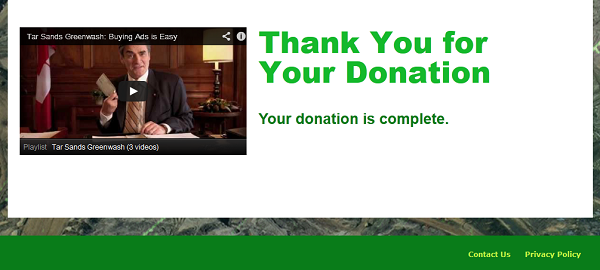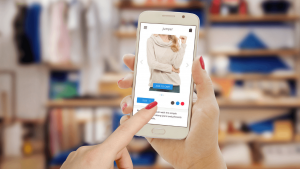The conversion funnel is the most important part of every e-Commerce website. It’s where the magic happens: visitors turn into customers, fulfilling the purpose of your website.
But sadly, as we know, not all visitors who put a product into their carts end up buying.
This is what’s known as a dropout or cart abandonment. The visitor initiates his journey through the conversion funnel, but he never completes it. Why?
Visitors do not complete their journey through the funnel for any number of reasons. Frequently, we have to guess at the reason for an abandoned cart.
But, using Google Analytics, we can locate where they quit.
While the existence of goals in Google Analytics (and other analytical tools out there) is common knowledge, many e-Commerce sites still struggle with getting the proper setup.
How to Spot Trouble Areas in Your Google Analytics Funnel
While the initial setup of your conversion funnel is undoubtedly important, we won’t go into technical details today (you can read more about designing your checkout flow here).
To start, you need to create goals in Google Analytics.
For a goal to be eligible for a funnel, it must be a “destination” goal — meaning that that you’ll set a specific web page as a goal, and the goal is achieved when the visitor loads the specified page.
In a typical e-Commerce environment, this is usually a page that marks the completion of a shopping process, such as a “Thank You” or “Transaction Confirmed” page.

After you setup your destination goal, you’ll be rewarded with a Funnel Visualization report, a highly useful feature in Google Analytics.
Here’s a typical example of a Funnel Visualization report:

Before you can be confident in your Funnel Visualization reports, you must first identify the exact pages that serve as the starting or entry point of your funnel. For most e-Commerce sites, product pages will generate most of the entries into the funnel.
However, other entry points are possible, too — such as landing pages or personal pages on your website.
A typical checkout process could look like this:
- Product page, landing page, or recommendation page
- Cart page
- Shipping and billing info
- Confirmation screen
- Thank you page
Regardless of how many funnel entry points there are, the rest of the journey through the funnel should be a single-line railroad. Ideally, customers should be able to initiate the journey through the funnel only when they add a product to the cart. Otherwise, your conversion ratios and Funnel Visualization data will make no sense.
So what can go wrong here? How can visitors end up on a page that should only be accessible as part of the checkout flow?
Three common goal-tracking issues
1. Technical Errors
The first thing that can go wrong is a technical error. Somewhere on your site, there’s an erroneous link to that final step in the funnel, and visitors are able to access it without initiating checkout.
If this is the case, you will start noticing a larger number of people in the bottom steps of the funnel than the total sum of dropouts and customers who proceeded to the next step. To solve this problem, identify and eliminate the “backdoor” entry and enable only legitimate customers to get to the goal page.
2. Omitted Page in the Funnel
Second, you may have omitted a page in the funnel and have a step unaccounted for. This omission should be very easy to spot. Contrary to the previous example, the sums will not add up, since you will have missed all the potential customers who dropped out on the omitted step.
This problem is also relatively easy to solve. Just go through the purchase process yourself and find out which step is missing from Google Analytics. Add it, and the data should miraculously appear.
3. Payment Gateways
One final possible error: You notice buyers drop out at the final step of the conversion funnel, but they return to the “Thank You” page in the same number.
This happens because the website uses a payment gateway (e.g. PayPal), so each time a customer goes to initiate payment, they effectively navigate away from your website to the third-party site. When they complete the payment, they are referred back to your website.
The result? A mess of the funnel data, and more generally of all your analytics data.
The solution to this issue is simple. In fact, there are two:
- If you’re using a third-party payment system or gateway (such as PayPal and similar merchant processors that take customers off the site to initiate and complete payment), add the third-party URL to the referral exclusion list.
- You can do this in Google Analytics. Go to the Admin tab and open Property Settings. There, open Tracking Info, and you’ll find the referral exclusion list. Fill in the field with the URL you need to exclude (for example, www.paypal.com).
- Use a payment system that integrates into your cart. That way, you have everything on your own site, so your funnel is foolproof, but you also preserve the integrity of the data in Google Analytics. You still retain the main advantages of your third-party payment gateway (trust and credibility), while removing the need for your customer to go to some other website to complete the payment.
Before we go on to analyze the funnel, there is one additional checkpoint to cover. Google Analytics has a report called “Reverse Goal Path.” Once you define your conversion goal and wait a week or two, you can go there and check what pages people open prior to reaching the goal.

If your funnel is structured correctly, there should be no difference between this report and your goal funnel steps. Using this method, you can verify that your funnel includes the pages customers actually open to complete the goal.
How to Analyze Funnel Data
Once you set up your funnel, you will need to allow some time to pass before the data become available. It may take a week or two for high-traffic sites (or longer for lower-traffic ones) to get enough data to draw valid conclusions. Ideally, you’ll wait for a month to get at least one well-rounded sales cycle to use as a baseline.
To analyze your funnel, open the Funnel Visualization report in Google Analytics. There you should see something like this:
 Funnel visualization report with the three major steps highlighted
Funnel visualization report with the three major steps highlighted
Basically, the funnel represents the visitor’s path from adding the product to the cart and going through a checkout, to enabling your merchant provider to charge them for it and deliver it to their address.
That means your visitor needs to complete the following steps:
- Add a product to the cart, select different options (color, size, etc.)
- Provide their contact information, delivery address, and billing method
- Validate that the order is correct and initiate payment
The reason to focus on those elements is that they represent the primary source of friction and funnel dropouts (in this specific case), so solving issues in these spots can net a substantial increase in number of conversions.
Below is the process I used in this specific case — but obviously your approach might differ based on the data you have.
Step 1: Address Dropout Rates from “Add to Cart” to Shipping and Billing Info
The first step of most e-Commerce checkout funnels starts with the cart. The visitor adds a product to the cart and then clicks “Proceed to checkout.”
This first step traditionally sees the largest dropout rate of all steps. According to a Baymard study, 69% of all online customers abandon the cart in their first step, just after adding the product.
When a prospect adds a product to the cart, but does not proceed further, it’s called cart abandonment — and it represents a large issue for e-Commerce retailers. The Baymard study also gives the average rate of shopping cart abandonment in e-Commerce stores as 75%.
And according to a Business Insider study, shopping cart abandonment for online merchants amounted to over $ 4.6 trillion worth of goods, of which approximately 60% was recoverable.

Cart abandonment represents a huge opportunity for ecommerce sites.
Given these data, it’s well worth your while to use every tool you can to address cart abandonment.
The problem with this step in the funnel is that you may not know why the customer added the product to the cart. They might be testing the water, checking the shipping price, or may even have added it by mistake. Without knowing why your prospect did not proceed with checkout, it is hard to improve the entry point.

The first step in the funnel.
As we can see, 1,287 prospects directly exited the funnel. We can only guess at their reasons.
However, 871 prospects exited the funnel to sign in, and this indicates a possible problem that can be solved to reduce dropout rates. By making it unnecessary to leave the funnel to sign in, those 871 prospects would likely join the 3,200 others who moved on, increasing likelihood that a number of them would complete the purchase.
Those 871 prospects represent a quarter of the total number that went on further. Of all the prospects that reached the step 2 of the funnel, 38% of completed the entire process. If we take that we can make 871 people reach it, then 330 prospects will be actually complete the entire checkout. With an average order value per customer of $ 224 USD, this could increase revenue by $ 74,000 a month.
Three Tips for Removing Dropout Rates on Step 1
There are a few general principles that can help you lower your dropout rate:
- Provide all relevant and pertinent information about price, shipping, and other important factors on the product page. The potential customer should not face unpleasant surprises later on.
- When a new visitor adds a product to the cart, consider offering a discount or benefit to strengthen their interest.
- Offer discount codes or some other benefits in exchange for a visitor’s email address. This way, you can contact customers who abandoned the cart and re-engage them through your remarketing efforts.
As Tommy Walker put it in a previous CXL blog post:
 Tommy Walker
Tommy Walker
““Free Shipping,” “Live Support,” or “Free Return Shipping” are all huge selling points, and could become the deciding factor for lower-cost cart abandoners. Harris Interactive has found that 56% of customers would be willing to switch brands based on better customer service options.
Using a service like Retargeter, you could run a campaign that leverages banner ads, video, and sidebar advertising, that highlights your customer satisfaction policies.
So if a cart abandoner leaves your site to watch a product video on YouTube, or searches a product review on a different blog, you’d be right there clearly demonstrating why your site is the best choice.”
Step 2. Address dropout rates from shipping and billing to confirming transaction
Shipping and billing information represent the first big test of your website’s credibility and trust. Before you can deliver your product to your customer, they need to tell you where to deliver the goods and how they are going to pay.
Generally, that requires giving away sensitive private information, such as home address, phone number, and credit card information.

The second step of the funnel
This step has a remarkably low dropout rate in our example. Of all the prospects, only 706 left the checkout process, and 343 left the site entirely. This is a good result, and indicates this store has few issues with trust, credibility, or friction at this step.
Aside from privacy and trust issues, you face several other potential hurdles, including shipping cost, payment options, and shipping options.
The issue of trust can be resolved in several ways, such as placing reliable trust indicators and seals at appropriate steps of the funnel to foster the prospect’s trust. For example, you might include the Symantec Safe Site seal to show customers that your site is secure from hackers.

The answer to this dilemma, as with everything else in optimization, is to test what works for you.
The issue of shipping cost is hard to overcome, as you may have little flexibility in changing what your shipping providers charge. Dealing with this will be part of your business decision-making, and depends on how much benefit you can provide to prospects without harming your bottom line.
Payment options (or rather, a lack thereof) are also a frequent cause of friction and cart abandonment. If your only payment option is charging a customer’s credit card directly and you require them to provide all the necessary data, don’t be overly surprised if fewer customers are willing to share this information.

Finally, shipping options can be a very large point of friction, as sometimes potential customers will add a product to the cart only to realize that it cannot be delivered to their location in reasonable time or at all.
Studies, such as this one on Practical ECommerce or this one on CXL, have shown that promising short delivery times, same-day shipping, or overnight delivery will increase conversions. Leverage this to your advantage, experiment with the copy used to describe shipping options, and reduce this obstacle.
Discovering the precise issue at Step 2 is not easy, but something that can help is triggering an exit-intent survey to get some qualitative feedback.

The best way to try to get customers who abandon their carts at this step to look back at your offer and eventually complete the purchase is to use remarketing to offer them additional benefits. Offering things like free shipping, additional items that complement the one the prospect was interested in, and discounts can all help change a prospect’s mind.
Step 3: Address Dropout Rate at the Payment Confirmation Step
While this step is usually viewed as a mere formality, this is only true if you’ve communicated all the information about the costs, shipping, and other store policies up front.
In this scenario, the customer already knows the final price tag, delivery time, and other potential qualifiers. If the final price tag contains surprising elements that raise the price or qualify the purchase — such as requiring purchase of some other product to use it or get it delivered — you will lose the customer at this final step.

The details of the final step in the funnel
We can see that 196 prospects left the checkout here. Although this is an insignificant number, those are still people who were willing to fill out the shipping and billing form, and then quit at the point of payment.
It means they were relatively highly motivated, and seeing them leave at this point is disappointing.
Prevent this by providing all pertinent information up front. If the particular product requires your customer to make other purchases, clearly state so on the product page itself. Never leave this sort of information to be the last thing your customer discovers just as he is about to click the “Complete Purchase” button.
Here is a breakdown of the most frequent reasons for cart abandonment, as identified by the aforementioned study conducted by Business Insider:

A full 58% responded that they did not complete the purchase because the shipping cost made it cost more than they expected, while 50% quit because they did not qualify for free shipping.
Additionally, 37% quit because the shipping and handling costs were listed too late in the process. All the aforementioned issues can likely be avoided by providing all this information at the start of the checkout process, or even before.
This is why you must carefully think through your checkout process and identify areas that can reduce friction. Avinash Kaushik, Google Analytics guru and analytics advocate, suggests putting yourself in your customer’s shoes:
 Avinash Kaushik:
Avinash Kaushik:
“Investigate if there are simple things people are looking for — information that is only in the cart or checkout process that could “falsely” get people into that process. Two examples:
- Shipping Costs: If people just want to know the shipping cost, make it easier for people to find shipping than by having to go to checkout or add to cart. Not only will this reduce abandonment, and give you your real abandonment rate, but it also sucks for your customers that you make this painful.
- Delivery Schedule: How long will it take me to get the product? Do you have it in stock? Let’s not wait until the end to share this nice information.
Check that your website is carrying out promotions correctly and reiterates in the cart and checkout process (in bold, gigantic letters) the discounts that your customer was promised in the offer, or on your affiliate site, or your product pages or in your campaigns. It is amazing how many websites don’t do this simple thing well.”
How to Segment your Funnel Data Despite Analytics’ Handicap
Now it’s time for some bad news — but don’t worry, it’s not that bad, just a bit inconvenient.
Unfortunately, unlike most other reports in Google Analytics, standard goal Funnel Visualization cannot be segmented (though you can overcome this with enhanced ecommerce funnel visualization). This can handicap your research, since you will not be able to see how different groups of your customers behave in the funnel and compare the patterns.
This sort of information can be very helpful for personalization or identifying whether your target audience converts better, as well as showing you how well the acquisition channel(s) convert, and if your marketing message is aligned with the offer.
Fortunately, there is a roundabout way to segment funnel data. It may take a bit more time to analyze and derive information, but it is worth it.
Introducing the Goal Flow report:

The Goal Flow report contains much the same information as the Funnel Visualization
This report can be segmented using the Advanced Segments feature, and that way, you can derive useful information that would otherwise be missing.
For example, you can check how mobile traffic converts, and what represents the great issue for that segment:

Mobile traffic Goal Flow
By examining the behavior of individual visitor segments in the funnel, we can uncover what can be improved to help them convert better.
Here, it looks like the mobile traffic has trouble going through to the billing and shipping step. This may also mean that mobile visitors add goods to the cart using mobile, but complete their purchases using their desktop computers.
If the former is the case, then you need to improve the design of the shopping process so that it enables mobile users to complete their purchases. By making your website more responsive to mobile users in general, you can solve this problem and capture an important audience segment.
As I mentioned above, Enhanced Ecommerce also gives you the ability to customize your funnel visualizations with more flexibility.

Conclusion
If your checkout process isn’t virtually flawless, keep working.
The checkout process is the most important part of an e-Commerce website, and it ought to function flawlessly to enable you to sell your products and generate revenue from your site.
For most sites, Google Analytics enables you to structure your funnel by the goals and steps a customer must take to complete the purchase process (single page applications are a trickier situation, but that’s for another article).
While Analytics can’t tell you exactly why a user quits, the position of the step in the funnel enables you to make an educated guess. And by analyzing where visitors go after they quit, you’ll get further insight into what may have gone wrong.
Digital & Social Articles on Business 2 Community(36)








